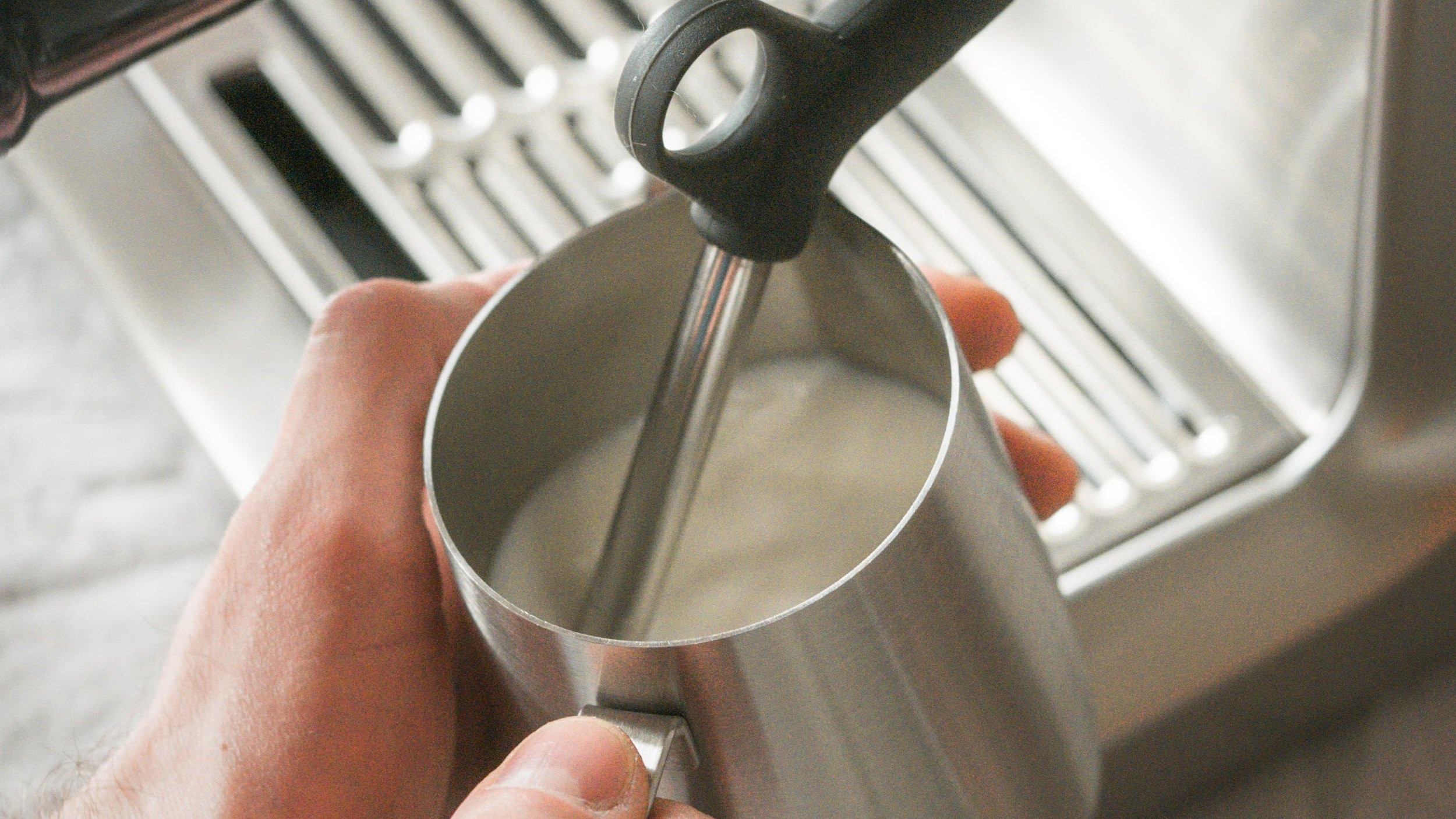How to Steam Milk on the Breville
Steaming milk at home may seem intimidating at first, but once you get the hang of it, it becomes an enjoyable part of your daily coffee routine. Whether you're aiming for a silky latte, frothy cappuccino, or rich macchiato, mastering milk steaming is key. The Breville Barista Express is a fantastic tool for achieving barista-quality steamed milk right in your kitchen. In this guide, I’ll show you how to steam milk on the Breville, based on my own hands-on experiences with this reliable machine.
Why Steamed Milk Matters
Understanding why steamed milk is important is the first step. When you steam milk, you're doing two essential things: creating foam (microfoam) and heating the milk. Properly steamed milk has tiny, uniform bubbles that give it a velvety texture. Not only does it enhance the appearance and flavor of your coffee, but it also adds smoothness that perfectly balances the bitterness of the espresso. This blend creates a flavorful and enjoyable drink.
Getting Started: The Breville Barista Express
The Breville Barista Express, also known as Sage Barista Express in the UK, is a highly popular home espresso machine with professional-grade features. One of its key components is the steam wand, which makes crafting perfectly steamed milk easy. While it may take some practice, soon you'll be making café-quality drinks right at home.
The steam wand on the Breville is user-friendly, offering enough power for efficiency while allowing you to control the milk texture to suit your preferences.
Essential Equipment
To steam milk on the Breville Barista Express, you'll need:
- The Breville Barista Express with its steam wand
- Cold milk (whole milk works best for rich foam, but alternatives like oat or almond milk can be used)
- A stainless steel milk jug (to help retain heat)
- A thermometer (optional, for monitoring milk temperature)
Step 1: Preparing Your Breville for Steaming
Before you start, make sure your Breville is properly prepped. Ensure it's turned on and heated up. The steam function button will light up when it's ready. I usually allow the machine to sit for a few minutes to reach its optimal temperature.
The next crucial step is purging the steam wand. This removes any water that may have accumulated in the wand, ensuring you get steam rather than water. Turn the steam knob for a second or two, then turn it off—now you're ready to steam.
Step 2: Preparing the Milk
Fill your milk jug about one-third full with cold milk. Cold milk gives you more time to steam before it overheats. Whole milk is ideal for lattes, but if you're using plant-based milk, be sure it's a variety specifically made for frothing, like barista versions of oat or almond milk.

Step 3: Positioning the Steam Wand
Positioning the steam wand correctly is key to getting the right milk texture. Insert the wand just below the milk surface at a 15- to 20-degree angle. The tip should barely sit beneath the surface to allow air to be incorporated and foam to form.
Position the jug so the milk swirls in a vortex motion, helping break down larger bubbles and ensuring smooth microfoam. I prefer to tilt the jug slightly with the steam wand placed near the edge.
Step 4: Steaming the Milk
Turn on the steam knob and start steaming. You should hear a hissing sound, indicating that air is being incorporated into the milk. Keep the steam wand's tip near the surface for the first 5–10 seconds to allow air into the milk.
Once you’ve added enough air, raise the jug slightly so the wand is deeper in the milk. At this point, the steam will heat the milk and create the desired microfoam. Aim for a smooth, swirling motion in the milk, which should take around 20–30 seconds.
Using a thermometer can help, especially if you're new to steaming. Aim for around 150°F (65°C). Without a thermometer, you can check by feel—when the jug is too hot to hold for more than a few seconds, your milk is ready.
Step 5: Finishing Up
Once the milk reaches the correct temperature and texture, turn off the steam and immediately wipe the wand with a damp cloth to remove milk residue. Purge the wand again to clear any trapped milk.
Tap the milk jug gently on the counter to remove any large bubbles and swirl the milk to integrate the foam. The milk should have a glossy, velvety appearance, indicating it's ready to pour.
Step 6: Pouring the Milk
Now it’s time to pour your steamed milk into your espresso. Start pouring slowly with the jug close to the cup. As the cup fills, raise the jug slightly to allow the foam to settle on top. If you’re feeling adventurous, this is the perfect moment to try your hand at some simple latte art.

Troubleshooting Common Issues
Steaming milk can be tricky initially, but common issues can be easily resolved:
- Milk not frothing: This could be due to the type of milk or the steam wand's positioning. Use whole milk and ensure the wand tip is just below the surface to get the right amount of air.
- Large bubbles in the foam: Too much air at the start can cause this. Keep the wand close to the surface but controlled, ensuring a steady flow of air.
- Milk overheating: Overheated milk can ruin the flavor. Use a thermometer or go by feel to ensure it stays around 150°F (65°C).
Final Thoughts
Mastering the art of steaming milk on the Breville Barista Express takes practice, but with patience, you'll be enjoying professional-quality coffee at home in no time. The key is controlling the amount of air and heat added to the milk to achieve smooth, velvety microfoam. With time and experience, you'll impress yourself and your guests with perfectly steamed milk for every drink.
